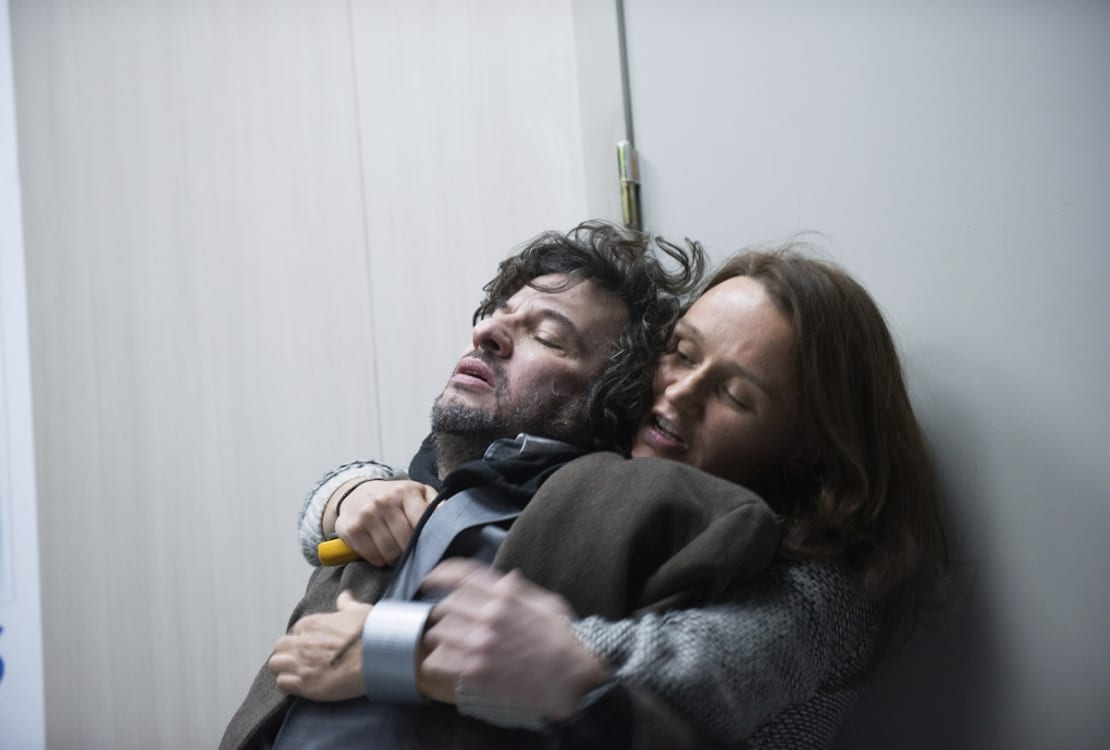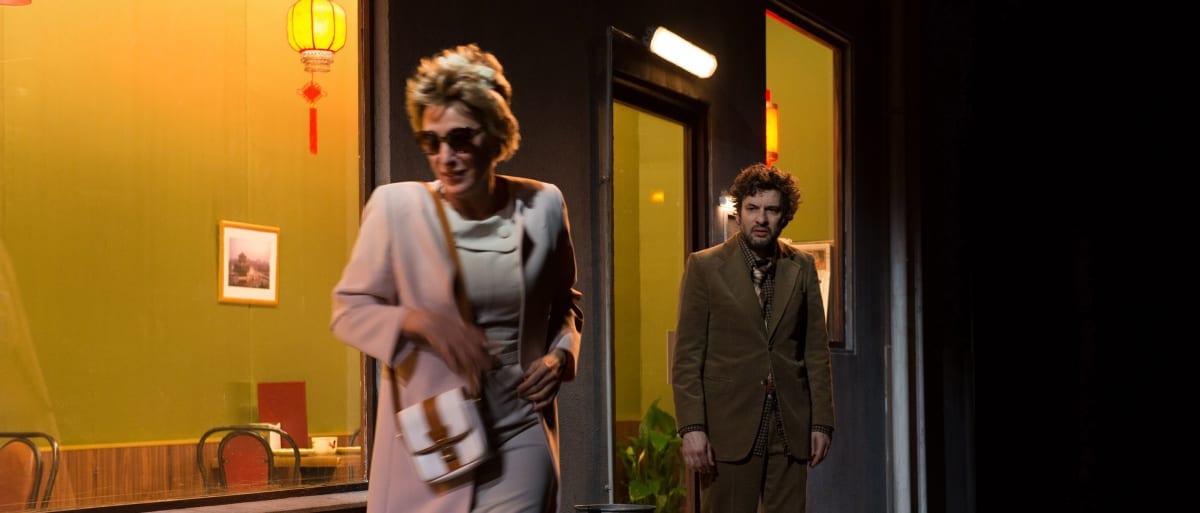La Trilogie de la Vengeance is the embodiment of Simon Stone’s wild vision of live cinematographic theatre. Upon arrival, the audience is divided into 3 groups. During over 3 hours, the 3 groups enter 3 different stages, viewing each the same story in a different order, trying to put the pieces together.
The audience’s anticipation stays strong until the very end, as one tries to grasp the essence of this insanely obscure group of people tangled through work, crime and incest, while endlessly smoking cigarettes on stage. Between many narrative ellipses and flashbacks, the story slowly unfolds, revealing dark secrets, addressing taboo subjects, and illustrating vengeance in a very cinematographic and feminist way (“People don’t think women would be capable of such a crime”).
Each set is beautifully set up, the first is an incredibly aesthetic pink and burgundy hotel room, surrounded by glass, the second is a painting-like street view of a Chinese restaurant, and the last is an extraordinarily ordinary office. From the aesthetics of the different sets, the sequencing of the whole show to the essence of the comedians including the extremely polyphonic text, the cinematography is striking. The acting is flawless. Adele Exarchopoulos, famous for her part in Blue is the warmest colour, is brilliant. Eye Haïdara, also known for her roles in Le Sens de La Fête and in La Taularde has been fiercely acting despite having a bad leg injury and crutches on stage. What a performance!

Each stage has two sets of doors, allowing the actors to move fluidly between each scene. The organisation of the performance means a huge amount of work for the actors who untiringly run from set to set, changing costumes, hairstyles and characters along the way. With seven women for only one man, actors sometimes change names adding to the difficulty of revealing the undermining story.
The script is a mixture of John Ford’s Tis Pity She’s a Whore, The Changeling by Thomas Middleton and William Rowley, William Shakespeare’s Titus Andronicus and Fuente Ovejuna by Lope de Vega, covered in contemporary glitter. Trying to google “how to start a fire so they don’t find the body”, addressing feminist issues, speaking of the strength of the new generation. If the story that unfolds is extremely dramatic, there is, however, a great combination of tension, comedy, and action.
The script is also full of little inconsistencies, epanorthoses, hesitations, stutters and so forth, forming a modern style close to Jean-Luc Lagarce’s plays, one of which was, by the way, made into a film directed by Xavier Dolan It’s Only the End of the World. There is also silence. Yet, silence is rare in theatre, however Simon Stone manages to insert it in places where it fits perfectly. As the audience exits, the murmur of the crowd arises wondering what the experience would have been like in a different order and the desire of going back to watch it twice is strong.

